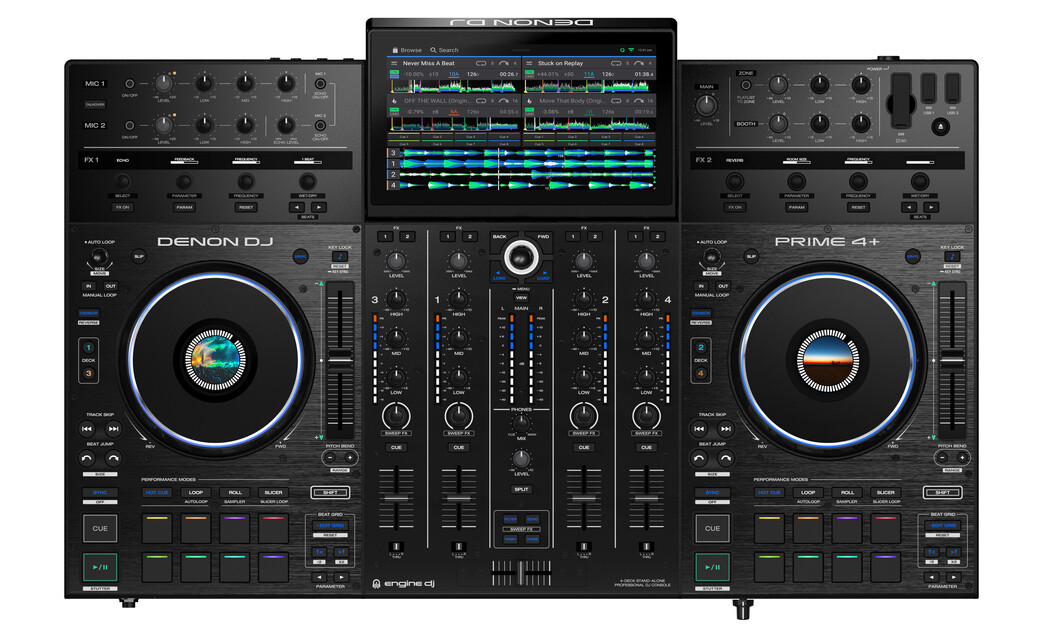Today we are going to discuss the Adam Audio speakers, specifically their highly coveted Ribbon tweeters or ART “Accelerated ribbon technology”. This technology is found in all Adam Audio monitors from the entry-level T series all the way to their pro audio units.
Adam Audio says that this is the best way to achieve a precise but distortion-free audio signal.
Click Here for the full range of Adam Audio products
So what is ART technology?
ART-Tweeters utilize a very lightweight folded mylar diaphragm material to move air, which is able to withstand the higher temperatures typically associated with loud playback, this is in part due to the composite makeup of the tweeter.

The tweeters have a frequency range that reaches much higher than the typical range of human hearing (20 kHz). Humans can hear to about 20 kHz whereas these tweeters are able to reproduce frequencies from between 25 & 50 kHz.
On a cone based tweeter design, the total area used to push air is the surface you can see looking at the tweeter. By folding the ART diaphragm a much larger surface area is achieved, this increases the size of the acoustically effective area by two & a half times. This means the speaker is able to produce a higher dynamic output with a wide area of dispersion
Why does the frequency response go so high?
Well, when the response of a speaker is much higher than the range of human hearing you can be sure it is capable of transparent and precise audio reproduction without really creating any audible distortion.
Why are speakers with low distortion desirable?
A lack of distortion is of course very desirable in a speaker, not only do you want to know that you are hearing a true representation of the sound being reproduced, especially when producing music, but also a distant lack of distortion means that your ears tire much less. This allows you to make music for longer without experiencing that ear fatigue that you get from prolonged exposure to high volumes. This is why it’s recommended that you make music for the most part at lower volumes.
Types of ART Tweeters
The U-ART
This is the type of ART found in the T-series monitors, they are made of polyamide film and ensure a clear and extended hi-frequency response up to 25kHz. A frequency range this high is very uncommon for speakers at this price point and represents a significant technology development in recording & producing on a budget. The U-ART tweeter takes advantage of a pleated ribbon that pulls air into the individual folds and then pushes the air out as the folds expand & push together as a direct reaction to the input signal. The result is a four-fold increase in the amount of air that the tweeter can move when compared to a standard dome tweeter. In contrast, a normal dome tweeter uses a piston-like action to move air and create sound waves which result in lower SPL’s and higher distortion levels. [IMG3791-L-R#my alt text]
Below you can find a quote from Adam Audio that illustrates the ART principle by comparing it with something that we all understand….. breathing.
“When you breathe, your thorax is moving slowly whereas the air is moving comparably fast. Similarly, the ART diaphragm presses the air faster in or out of its folds than they themselves are moving. This markedly superior ”motor” is responsible for the unprecedented clarity and pristine transient reproduction that can be heard with the ADAM ART drive units.” Adam Audio . (2018).
The X-ART

Extended Accelerated Ribbon technology (X-ART)pushes this technology further still. It works in much the same way but allows for a frequency response up to 50 kHz. As well as the extended frequency response the X-ART uses a pleated membrane to avoid distortion and the successive dynamic limiting that goes hand in hand with more rigid voice coil designs like the ones you find in dome tweeters. Another interesting feature of the design is the way in which the driving stripes are in contact with the outer air thus cooling almost instantly.
These tweeters are found in the AX range of Adam Audio Monitors.
The S-ART
All of the Adam Audio S series speakers use the latest version of the X-ART tweeter previously discussed. The S-ART tweeters are supposedly tested to even higher standards than the X-ART, making the manufacturing process as precise as possible.
The driver’s precise transient response and its ability to reproduce the high-end details, free of distortion and with very natural-sounding dynamics, mean that it is the monitor of choice for your higher-end pro applications.
Hopefully, this post gives you a little more insight into the different types of tweeters used in Adam Audio speakers and will help when deciding what model of speaker to go for. Below you’ll find the range of T-series monitors, still one of our favourite monitors here at GetintheMix. Feel free to call us on 01206 845 125 for more information.
Resources & References
Adam Audio . (2018). THE X-ART TECHNOLOGY. Available: https://www.adam-audio.com/en/technology/x-art-tweeter/. Last accessed 18/02/2022.
Adam Audio . (2017). U-ART™ HIGH FREQUENCY DRIVER. Available: https://www.adam-audio.com/en/technology/u-art/. Last accessed 18/02/2022.
Adam Audio . (2017). S-ART™ – HIGH FREQUENCY DRIVER. Available: https://www.adam-audio.com/en/technology/s-art/. Last accessed 18/02/2022.



